The Liverpool Factor:
"Routes" to the Beatles' Success
by Peter R. McCormack

Introduction
At the time in which the Beatles first rose to popularity in the early 1960's,
the population of the predominantly working-class city of Liverpool proper numbered about a half million.
While the Beatles began to make a name for themselves there were as many as 300 other
beat groups performing the "Mersey Beat" or the "Liverpool Sound" in more than 200
pubs, coffee houses and jazz bars carved out of the city's industrial landscape.
Musical venues grew at an almost exponential rate as the supply of small cellar clubs and converted theaters was unable to meet the demand.
These tiny establishments quickly became replaced by cramped wharehouses of hundreds of fans with an unquenchable thirst for a new direction in popular music. So it was then, that the music spawned in Liverpool
would set the stage for a popular new sound revolution that changed the world. This article will
examine Liverpool with the aim of understanding the social, economic, cultural and political factors that led to the
success of the most unique and influential Rock and Roll group in history. It will endeavour to show
that the Beatles' accomplishments were inextricably tied to the major shipping centre in which they were
socialized.
Liverpool over looking the Mersey
Click on the Mersey to take the Ferry
The Creation of a Liverpool Sound
In this rough old port city of Liverpool, where sparing Catholic and Protestant pub patrons would
brawl after last call, the music of the Beatles was popular but by no means universally accepted. Enthusiasts spoke of
them as "fresh and innocent" and by today's standards a perusal of the lyrics of "Love Me Do" or "She Loves You" provides
support for such a claim. Opponents and more staid Liverpudlians of the day, however, perceived the "din" as barbaric and hastened
to remind the less reflective, that there was a strong resemblance between the ancient symbols of fertility
and the contour of the electric guitar. Although the musical seeds sown by the Beatles quickly bore fruit in Liverpool, they were somewhat unsure of the manner in which to
describe their captivating "new" sound and its place in history. Shortly after their rise to fame in the early 1960's, Paul McCartney exclaimed "All this nonsense about a Liverpool Sound.
It doesn't really exist! It's a load of rubbish." John Lennon, the humourist from the beginning, offered "Well it's fun of course.
We're having a fab time. But it can't last long. Anyway, I'd hate to be old. Just imagine it. Who
would want to listen to an 80 year old Beatle." Nearly forty years later, Lennon's question is answered. A
75 year old baby boomer will listen to an 80 year old Beatle providing the surviving three members
enjoy such longevity. Even more interesting is that the children and grandchildren of these first Beatle fans also have an
attraction so strong to this music that some of the more zealous may consider genetic.
It may seem that Liverpool was a most unlikely place to see the rapid
evolution of a unique new British sound. An examination of its history and importance as an international
port, however, reveals several factors that seem to have set the stage for the "Mersey Beat."
Social Factors: Shipping Hub of the World
Liverpool was first settled in 1207 AD by charter of King John. By the middle of the seventeenth century
it was the major trade link with Ireland. Throughout the 18th and 19th centuries, it
was a very busy port that saw ships coming from all over the world. Located at the mouth of the Mersey River, the presence of vessels at
the port was perhaps best expressed by novelist Albert Smith who coined the phrase "ships, ships and shipping everywhere." (See Walker and Hinchliffe, 1978)
Advances in steam technology during the first quarter of the 19th century was applied to shipping which resulted in faster transportation by sea. From 1830 to 1850 more than a dozen fine docks were
built to accommodate a tremendous shipping demand. These docks extended
along the coast for a distance of close to five miles. By 1912 Liverpool was able to boast having 15% of the world's
total shipping market. In addition, the world's first passanger train departed from Edge Hill, Liverpool in 1830. Passangers from these modes of transportation
brought products and information from many countries to the Mersey region. By the late 1950's this included music from America where such greats as
Buddy Holly and Elvis Presley were changing the face of popular music. Liverpool was just one ship away from the latest rock and roll news. Much musical information
came into Liverpool on a frequent basis in the form of visiting artists, records, literature and word of mouth
through the shipping trade. This stream of information shaped the insatiable musical appetite of those young musicians seeking Rock and Roll fortune.
Once landed in Liverpool, this music was adapted within the confines of a community that was strategically located to receive information but
far enough away from the influence of London and other major cities to permit its own freedom of expression. The
awareness of current musical trends emerging from America in concert with a more isolated Liverpool setting enabled
the development of a unique "Liverpool Sound". The times were indeed changing and working class Liverpool would now take its turn
in showing the English south and indeed the world, the rhythms to which they would dance.
The Albert Dock
Click on the dock to see the first
Liverpool built steamship to reach New York
Economic Factors: A Thriving Commerce
This large commercial region developed a dense population near the shores
of the River Mersey that had a considerable need for recreation. Few cities can rival the population growth
experienced by Liverpool from 1841 to 1851 when, during the Potato Famine, the borough grew from 286,000 to
376,000 residents primarily due to the influx of Irish refugees. A much greater number settled outside of the city core. While an examination of the scale of the Irish
immigration is beyond the scope of the present article, the arrival of the refugees substantially changed the demographics of Liverpool.
A review of the number of incoming Irish paupers was ordered by the magistrate, Edward Ruston in December 1846. The
results of the survey published in the Liverpool Courier on June 16, 1847 revealed "that between the 13th day of January
and the 13th day of December 1847, both days inclusive, 296,231 persons landed in this port from Ireland."
A subtantial number settled in the North End of Liverpool a short distance from the docks where they had arrived.
The proportion of Irish born residents in this area was so high that according to some historians (see Neal, 1988) this
region was referred to as "Little Ireland." The density of the population in this area at that time is difficult to comprehend.
In 1841, the average population density for England and Wales was 275 people per square mile. In Little Ireland, this statistic was
calculated to be a staggering 657,963 residents per square mile.
In addition to its Irish descendants, Liverpool is
strongly represented by people of Scottish, Welsh and Chinese heritage. It boasts having the oldest Chinese community
in Europe. The hunger and thirst of citizens and visitors packed into the city's northside was satisfied
by numerous pubs in very close proximity to one another. This high density of drinking establishments
in Liverpool proper lead some residents and visitors to joke that the city had a "pub on every corner."
Clubs such as the Jacaranda, Blue Angel, Mardi Gras and the Cavern not only became the favourite haunt of
Liverpudlians, tourists and business people but soon enjoy notariety that their names would be echoed around the world. If you had to put into port in England, Liverpool was surely the
best place for a memorable time and plenty of hospitality. Evolving from the jazz tradition, these pubs
fostered much competition for Liverpool businesses and no aspiring club manager would have a highly successful
venture without insuring live musical entertainment. The Beatles first sought out Allan Williams who had a reputation of presenting
groups that went against the grain of the popular music at the time (see Flippo, 1988). William's Jacaranda and the majority of other establishments were in every nook and cranny in Liverpool and
even in the basements of private residences. Rising to meet the demand, coffee houses designed to accommodate a few
dozen patrons at a time, eventually took a backseat to wharehouses with the capacity to hold hundreds. The ever growing number of clubs provided a market for an ever increasing pool of
young musicians, each emulating their favourite artists, many whose roots were deeply imbeded in the rock and roll music
of the United States.
The Famous Cavern on Mathew Street
Click on the Cavern to Enter
Cultural Factors: Education and the Arts
The University of Liverpool received its charter in 1881 and this institution initiated the development
of the museums and art galleries that would value and encourage creative thought in the region over the next century. Somewhat earlier,
the Royal Liverpool Philharmonic Orchestra provided the city with it first performance in March 1840. The orchestra and its Society,
did much to create enthusiasm for music in Liverpool. The city has interesting examples of Georgian, Victorian and Gothic Revival architecture that have become a part
of Liverpool's unique character. Art schools enjoyed a fine reputation and flourished with the University and colleges.
Art played an important
role in the lives of the Beatles. It was a major preoccupation for Stuart Sutcliffe and frequently
surfaced throughout John Lennon's musical career.
The region was also a known haven for budding and seasoned playwrights and poets alike. This climate served to facilitate an environment of creativity and
new thinking that lead to the acceptance of many diverse styles of art and music. The presence of many musicians promoted the flourishing of music shops.
Liverpool was a
major center for the arts and its tolerance of new thought and expression would be
an essential ingredient in the development and acceptance of the Mersey Beat.
Early band member Stuart Sutcliffe's Art
In the basement of the Jacaranda
Click on Stuart's Art to visit Hessey's
Political Factors: Surviving World War and Famine
Liverpool was born in the early thirteenth century, in part, as a distribution point
for soldiers and supplies related to England's plans to engage in a conflict with Scotland. In this tradition it evolved
not only as a port of trade, but also as a strategic military port. Many of Liverpool's decendents were from Ireland
and came from a history of overcoming such adversities as the Potato Famine. The Naval yards
cost Liverpool a great deal as the city was pounded relentlessly by the German Luftwaffe during World War II.
Many areas became bombed and indeed the destruction produced by the Blitzkrieg was clearly evident to the Beatles during their formative years. Stories of bomb shelters and World War II continued
to be fresh in the minds of the Beatles' parents. Indeed, it is to be remembered that John Lennon was born on October 9, 194
and documented bombing raids by Germany took place approximately a fortnight before and a week after his birth. Liverpool may be described a maverick city with a character like no
other in England. It is in this climate that the Beatles challenged the status quo. They learned, more through necessity than design,
of the recognition associated with raw and intense performances in cramped clubs filled with pugnacious patrons. It was this sense toughness and aggressive
posturing, in spite of their tendency to avoid it, that surely saw them through difficult personal and professional times that may have stymied other artists.
The Beatles at a bombsite in Liverpool (1962)
Click on the bombsite to see the Teddyboys
Conclusion
There can be no doubt that each of the Beatles had his own unique talents and it may be argued that these
abilities would have surfaced regardless of the community. Nonetheless,
these talented and creative people were clearly in the right place at the right time. It is too trite
to attribute their popularity to "good fortune" alone. There were countless other groups
from other locations, including Liverpool, but few of them realized the achievements of the Beatles. It is considered that the Beatles' success
was abetted by their toughness, resiliancy, persistence and, of course, unique abilities. These personal qualities stemmed from their
socialization in Liverpool and were nourished in an artistic climate honed in a time long before their birth. The raw edge seen in their music
was also evident in their personalities. Drawing from a behavioural repetoire that included flippant, oppositional and defiant traits, they were able to transcend a number difficult personal and professional trials and tribulations.
That their performance had a powerful and dramatic effect on others was a lesson that the Beatles learned early. It is
contended, that many of the factors leading to their world acclaim did not exist to the same extent anywhere but Liverpool. Accounting
for the success of any artist is bound to be multifactorial in nature. The factors presented in this
article are considered to be important, although by no means exhaustive, in explaining the good fortune of the Beatles.
The foundation for the richness and soulful attraction of the Liverpool sound can be traced through their heritage which began
a mere 800 years earlier. For the Beatles, the history of Liverpool was "The long and winding road that leads me to your door."
Lennon Statue in Liverpool on Mathew Street
Copywritten Photo courtesy of John Bythell
References
Bythell, John
The S J S Files
Coleman, Ray John Winston Lennon Volume 1 1940-1966. London: Sidgwick & Jackson, 1984
Mr. Coleman, the well known Beatles biographer, was a former editor of the British pop music weekly Melody Maker from
1960 to 1979. He died of cancer on Sept. 10, 1996 at his home near London at the age 59.
His professionalism was evident in all his work and he was highly respected by the journalistic community and the
Beatles.
City of Liverpool
Liverpool City Council Website
Delano, Julia The Beatles Album. Hong Kong: Bison Books Ltd, 1991
Flippo, Chet Yesterday: The Unauthorized Biography of Paul McCartney. New York: Doubleday, 1988
Forsyth, Ian
The Beatles' Merseyside
Liverpool Information
Liverpool.com
Local Liverpool History Book and Video
Mersey World
Midwinter, Eric Old Liverpool. Newton Abbot: David & Charles, 1971
Miles, Barry The Beatles: A Diary. London: Omnibus Press, 1998
Neal, Frank Sectarian Violence: The Liverpool Experience 1819-1914 An aspect of Anglo-Irish history. Tiptree: Manchester University Press, 1988
Norman, Philip Shout: The True Story of The Beatles. London: Transworld Publishers Ltd., 1982
Pawlowski, Gareth How They Became the Beatles: A Definitive History of
the Early Years 1960-1964. New York: E. P. Dutton, 1989
The late Gareth Pawlowski was considered by many as The Premiere Beatles' Collector. The above title
contains a wealth of information reagrding the early years of the Beatles. He was a stickler for accuracy
and with his passing leaves a great Beatles' historian. It is his
fine work that lead to the writing of "The Liverpool Factor."
Raber, Martha
In the Thick of It: And how did you find Liverpool, Martha My Dear?
Smith, Ron
Liverpool before 1900
Thompson, Phil
The Best of Cellars
Walker, Brian and Hinchliffe, Ann
In Our Liverpool Home. Belfast: Blackstaff Press, 1978
Wheeler, Ramona
The Jacaranda Club
Wheeler, Scott
Liverpool Memories
Wheeler, Scott
The Jac is Back: A history of the Jacaranda
Wheeler, Scott
Follow the Fleet: A Short History of the Ferry Service on the Mersey
Williams, Allan and Marshall, William The Man Who Gave the Beatles Away. New York: Macmillan
Publishing Co., Inc. 1975
Yenne, Bill The Beatles. Hong Kong: Bison Books Ltd, 1989
|
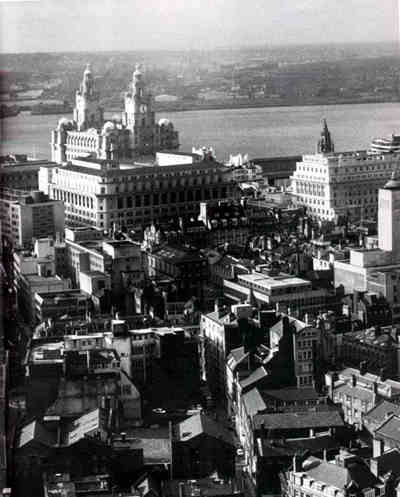
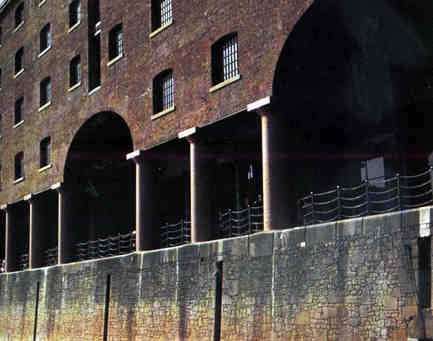
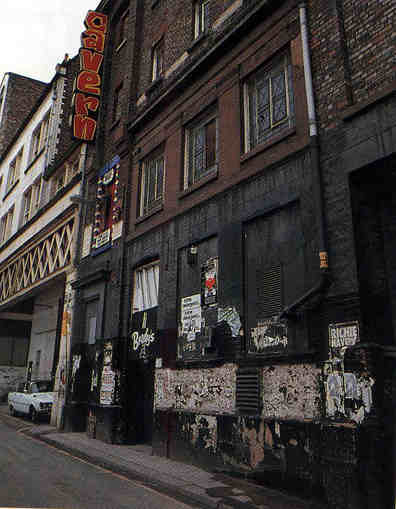
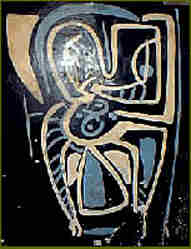
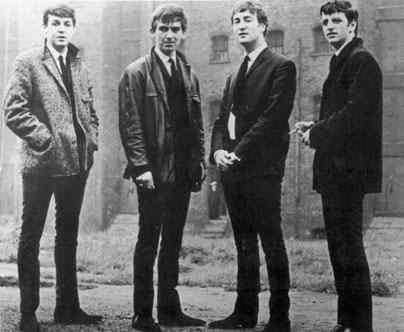

 Article Submitted on June 18, 1999 - Revised July 15, 2001
Article Submitted on June 18, 1999 - Revised July 15, 2001



